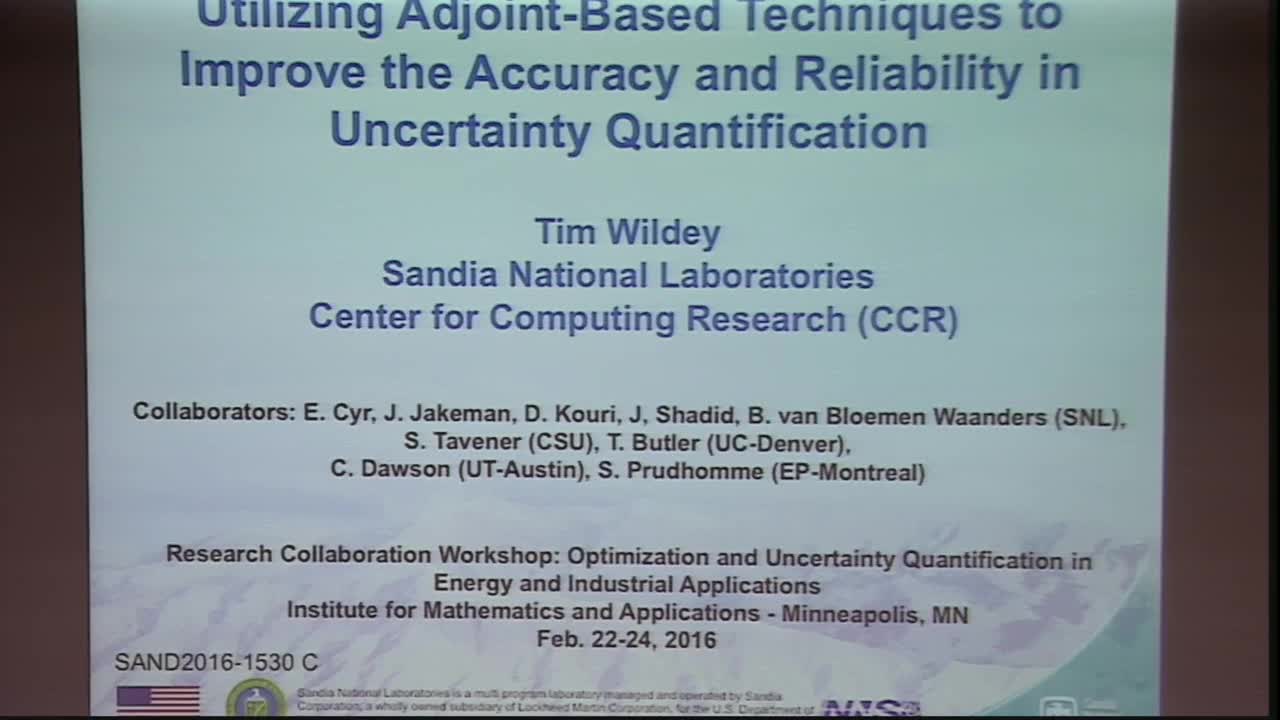Utilizing Adjoint-Based Techniques to Improve the Accuracy and Reliability in Uncertainty Quantification
Presenter
February 23, 2016
Keywords:
- uncertainty quantification, error estimation, response surface approximations
MSC:
- 68T37
Abstract
Uncertainty and error are ubiquitous in predictive modeling and simulation due to unknown model parameters, boundary conditions and various sources of numerical error. Consequently, there is considerable interest in developing efficient and accurate methods to quantify the uncertainty in the outputs of a computational model. Monte Carlo techniques are the standard approach due to their relative ease of implementation and the fact that they effectively circumvent the curse of dimensionality. Unfortunately, the number of samples required to accurately estimate certain probabilistic quantities, especially the probability of high-risk, low- probability events, may be prohibitively large for high-fidelity computational models.
A number of recently developed methods for uncertainty quantification have focused on constructing response surface approximations of the input-to-output mapping using only a limited number of high-fidelity model evaluations. The fact that a very large number of samples can be efficiently evaluated using the response surface effectively reduces the statistical component of the error in the probabilistic quantity of interest. However, the deterministic component of the error may be quite large due to the standard sources of discretization error as well as the interpolation of the response surface approximation. The accumulation of these deterministic errors may significantly affect the accuracy of the probabilistic quantity of interest.
In this presentation, we discuss the development of adjoint-based methods for multi-scale and multi-physics applications of interest to SNL/DOE. We then show how adjoint-based techniques can be used to efficiently estimate the error in a quantity of interest computed from a sample of a response surface approximation. These error estimates are then used to construct an enhanced response surface approximation with a higher-rate of convergence as well as to develop adaptive strategies focusing on estimating probabilities of events and accounting for discontinuities in the response surface.
